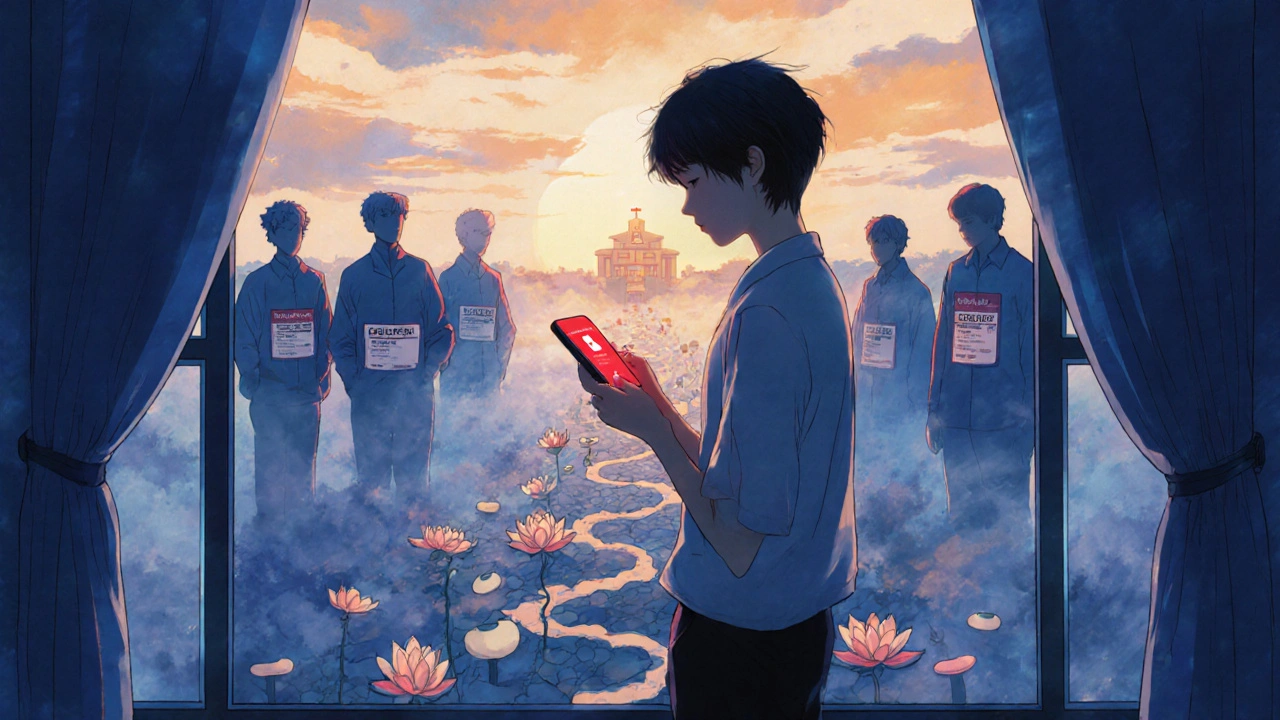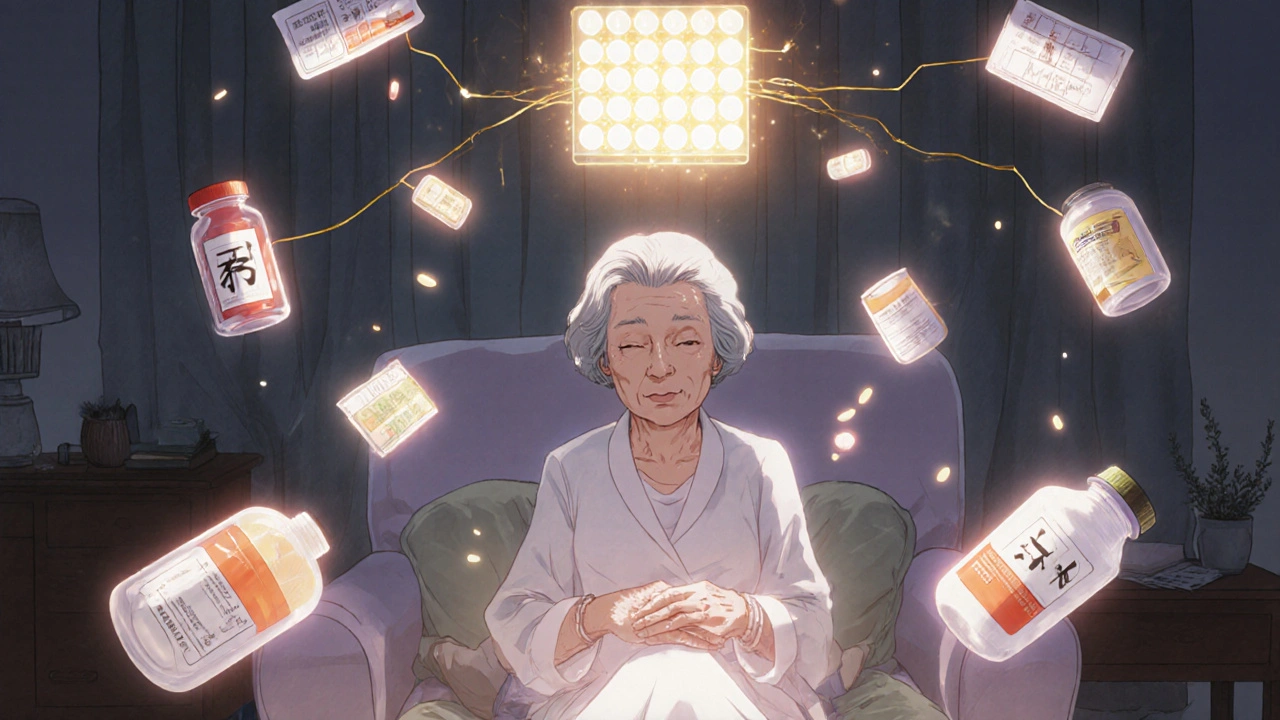Every year, over a million people in the U.S. end up in the emergency room because of unexpected reactions between their medications. Many of these cases could have been avoided with a simple check at home - if you know how to do it right. You’re not alone if you’re juggling prescriptions, over-the-counter pills, vitamins, or herbal supplements. In fact, nearly half of adults over 50 take five or more medications daily. That’s a lot of chances for something to go wrong. The good news? You don’t need to be a doctor to spot potential dangers. With the right tools and a little caution, you can check for drug interactions safely from your living room.
Know What You’re Taking - Before You Check
You can’t check for interactions if you don’t know what’s in your medicine cabinet. Start by writing down every single thing you take, including:
- Prescription drugs (brand and generic names)
- Over-the-counter pain relievers like ibuprofen or acetaminophen
- Vitamins and minerals (especially iron, calcium, or vitamin K)
- Herbal supplements like St. John’s Wort, garlic, or ginkgo
- Common remedies like antacids, sleep aids, or allergy pills
- Alcohol, caffeine, or grapefruit juice - yes, these count too
Don’t guess. Look at the bottle. Many people don’t realize that a common cold medicine might contain the same active ingredient as their painkiller. That’s how double-dosing happens. For example, Tylenol and many cold formulas both contain acetaminophen. Taking both can lead to liver damage. Same with ibuprofen - it’s in Advil, Motrin, and dozens of multi-symptom products. Write down the active ingredient, not just the brand name. That’s what the checker tools use to find conflicts.
Use a Trusted Drug Interaction Checker
There are dozens of apps and websites that claim to check for drug interactions. But not all are created equal. Stick to tools backed by medical institutions or pharmacies. The most reliable ones include:
- Drugs.com Interaction Checker - Covers over 80,000 possible interactions, updated daily, and includes supplements and foods.
- WebMD Drug Interaction Checker - Easy to use with color-coded severity levels (red = major, yellow = moderate, green = minor).
- Medisafe App - Not just a checker, but a medication tracker that scans barcodes and reminds you when to take pills.
These tools work by matching your entered medications against databases built from decades of clinical research. They flag known reactions like:
- Warfarin + ibuprofen = higher bleeding risk
- St. John’s Wort + antidepressants = serotonin syndrome
- Grapefruit juice + statins = dangerous buildup in the bloodstream
- Calcium supplements + thyroid meds = reduced absorption
Drugs.com’s tool is the most thorough - it catches 12% more moderate interactions than WebMD. But WebMD explains things in plain language, which helps if you’re not familiar with medical terms. Use both if you’re unsure. Don’t rely on random apps from the app store. The FDA warned about 17 fake interaction checkers in 2022. Stick to well-known names.
Understand the Severity Levels
When the checker flags an interaction, it won’t just say “warning.” It will tell you how serious it is. Here’s what each level means:
- Major - This could be life-threatening. Examples: mixing certain antidepressants with migraine meds can cause seizures or heart rhythm problems. Don’t ignore this. Call your doctor or pharmacist right away.
- Moderate - Not an emergency, but needs attention. This might mean your blood pressure medication isn’t working as well, or your cholesterol drug is less effective. Your doctor may adjust the dose or timing.
- Minor - Usually harmless, but might cause mild side effects like drowsiness or upset stomach. Still worth noting, especially if you’re sensitive to medications.
Don’t panic over a minor alert. But don’t dismiss a major one either. A 2022 case in Australia showed a woman avoided serotonin syndrome after her checker flagged a dangerous combo of sertraline and St. John’s Wort. She called her pharmacist before taking the supplement - and saved her life.

Watch Out for False Alarms and Missing Risks
These tools are smart, but they’re not perfect. About 18% of flagged interactions turn out to be false positives - meaning the risk is lower than the tool says. This happens because databases are built from population studies, not individual biology. Someone with healthy kidneys might handle a combo just fine, while someone with kidney disease could be at risk.
Also, some interactions aren’t in the system yet. New drugs, rare herbs, or unusual combinations might not be flagged. A 2023 case report described a cancer drug that didn’t trigger any alerts - even though it dangerously lowered blood pressure when taken with a common beta-blocker. That’s why these tools are helpers, not replacements for professional advice.
And here’s something most people forget: interaction checkers don’t know your full health history. If you have liver disease, kidney problems, or heart conditions, the same drug combo might be risky for you but safe for someone else. The checker doesn’t ask about your medical history - you have to bring that to your provider.
Take Action - Don’t Just Check
Checking is only step one. What you do next matters more.
- Write down every flagged interaction - Include the drugs involved and the severity level.
- Call your pharmacist - They’re trained to interpret these results. Most pharmacies offer free consultations. Tell them what the checker found. Ask: “Is this something I need to change now, or can I monitor it?”
- Don’t stop meds on your own - The FDA found that 15% of people quit essential medications after seeing a warning - even when it wasn’t truly dangerous. Stopping blood pressure or heart meds suddenly can be deadly.
- Ask your doctor about alternatives - If there’s a major interaction, ask: “Is there another medication that works just as well but won’t conflict?” GoodRx now suggests cheaper, safer alternatives when it finds a conflict.
One of the best safety tips? Use one pharmacy for all your prescriptions. When all your meds are filled in one place, the pharmacist can run automatic checks every time you pick up a new one. Studies show this reduces interaction risks by 31%.

Make It a Habit - Not a One-Time Check
Your meds change. So should your interaction check.
Update your list every 30 days - or whenever you start, stop, or change a medication. That includes new prescriptions from your doctor, OTC meds you pick up for a cold, or supplements you try for sleep or joint pain. Many people forget about the little things: a new magnesium pill, a daily turmeric capsule, or switching from one painkiller to another.
Set a monthly reminder on your phone: “Check my meds.” Spend five minutes reviewing your list and running it through Drugs.com or WebMD. It takes less time than scrolling through social media. And it could prevent a hospital visit.
When to Skip the Checker and Call Immediately
Some symptoms mean you shouldn’t wait for a tool - you need help now:
- Sudden confusion, dizziness, or fainting
- Unusual bleeding or bruising
- Fast, irregular heartbeat
- Severe nausea, vomiting, or diarrhea
- Yellowing of skin or eyes (sign of liver stress)
- Seizures or loss of consciousness
If you’re experiencing any of these - and you’ve recently changed your meds - go to the ER or call emergency services. Don’t wait to check an app. These are signs of real, active danger.
What’s Next? Personalized Safety Is Coming
Drug interaction checkers are getting smarter. In late 2024, 23andMe plans to launch a feature that combines genetic data with interaction alerts. If you’ve done a DNA test, you might soon see warnings like: “Your genes make you more likely to have a bad reaction to this statin.”
Also, Medicare is rolling out integration with MyMedicare accounts by mid-2024. That means your interaction history could be shared with your doctors and pharmacists automatically - if you give permission.
But for now, the best system is still simple: know your meds, use a trusted checker, talk to your pharmacist, and don’t skip the human step. Technology helps - but it doesn’t replace care.
Can I trust free drug interaction checkers online?
Yes - but only if they’re from trusted sources like Drugs.com, WebMD, or Medisafe. Avoid random apps or websites with no clear medical backing. The FDA has warned about 17 fake interaction checkers that give false or dangerous advice. Stick to well-known pharmacy or health organization tools.
Do I need to check interactions even if I only take one prescription?
Absolutely. Even one prescription can interact with OTC meds, supplements, or food. For example, blood thinners like warfarin can react with vitamin K in leafy greens. Antibiotics can make birth control less effective. Grapefruit juice affects over 85 medications. You don’t need to be on five drugs to be at risk.
What if the checker says there’s an interaction but my doctor says it’s fine?
Trust your doctor - but ask why. Sometimes, the interaction is manageable with dose changes or timing. For example, taking a statin at night and a calcium supplement in the morning can avoid absorption issues. Your doctor knows your full health picture. Use the checker result as a conversation starter, not a final verdict.
Can herbal supplements really cause dangerous interactions?
Yes - and they’re often overlooked. St. John’s Wort can reduce the effectiveness of birth control, antidepressants, and HIV meds. Garlic and ginkgo can increase bleeding risk when taken with aspirin or warfarin. Many people assume “natural” means safe, but herbs act like drugs in the body. Always list them on your medication checklist.
How often should I update my medication list?
Update it every 30 days - or anytime you start, stop, or change a medication. Even small changes matter. A new pain reliever, a different vitamin, or switching from one brand of antihistamine to another can trigger an interaction. Keep your list in your phone or wallet so it’s always handy when you see a doctor or pharmacist.
Are drug interaction checkers useful for older adults?
They’re especially useful. Seniors are the most likely to take multiple medications - and the most at risk for dangerous interactions. Studies show that combining digital checkers with pharmacist consultations reduces hospitalizations by 42% in Medicare patients. If you or a loved one is on five or more meds, this tool is not optional - it’s essential.


